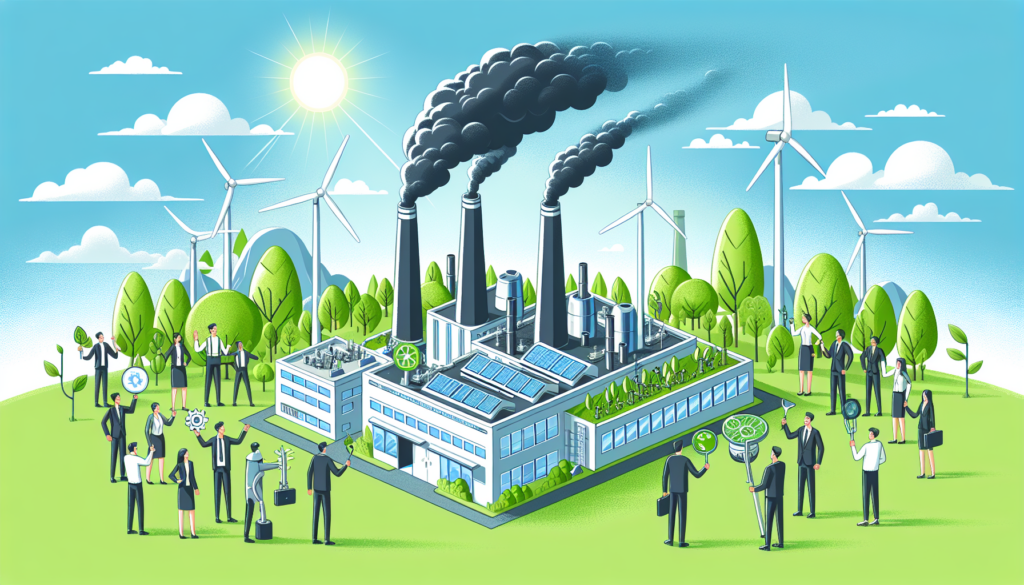Current Trends in Carbon Emissions Reduction
One of the most significant recent trends in carbon emissions reduction is the push for renewable energy sources. With the increasing availability and affordability of solar, wind, and other renewable energy technologies, companies are finding it easier than ever to transition away from fossil fuels. This shift not only helps reduce carbon emissions but also provides long-term cost savings for businesses.
Another key trend is the rise of electric vehicles in logistics and transportation. Companies like Amazon and UPS have been investing heavily in electric delivery vehicles to reduce their reliance on traditional gasoline-powered trucks. This move not only lowers carbon emissions but also helps improve air quality in urban areas where delivery vehicles are most active.
Furthermore, the concept of a circular economy is gaining traction in the business world. This model encourages companies to minimize waste and maximize the use of resources through practices like recycling, reusing, and refurbishing. By implementing circular economy principles, companies can significantly reduce their carbon footprint while also saving money on raw materials and waste disposal.
How Companies in Fulfillment and E-commerce are Reducing Carbon Emissions
In the realm of fulfillment and e-commerce, companies are finding creative ways to reduce their carbon emissions. One common strategy is optimizing their supply chains to minimize transportation distances and consolidate shipments. By streamlining their logistics operations, companies can reduce the number of miles traveled and the associated carbon emissions.
Additionally, many companies are investing in green technologies and practices within their warehouses and fulfillment centers. This includes installing energy-efficient lighting, heating, and cooling systems, as well as utilizing automation and robotics to improve efficiency and reduce energy consumption. By greening their facilities, companies can significantly lower their carbon emissions while also lowering their operating costs.
Furthermore, some companies are exploring the use of sustainable packaging materials to reduce waste and carbon emissions. By using recyclable, biodegradable, or compostable packaging, companies can minimize their environmental impact while also appealing to eco-conscious consumers. This shift towards sustainable packaging is not only good for the planet but also for companies’ bottom lines as more consumers prioritize sustainability in their purchasing decisions.
The Role of Fulfillment Hub USA in Carbon Emissions Reduction
Fulfillment Hub USA, a leading provider of logistics and fulfillment services, is at the forefront of the movement to reduce carbon emissions in the industry. With a commitment to sustainability and environmental stewardship, Fulfillment Hub USA has implemented a range of initiatives to minimize its carbon footprint.
For example, Fulfillment Hub USA has invested in solar panels on its facilities to generate clean, renewable energy. By harnessing the power of the sun, Fulfillment Hub USA is able to reduce its reliance on grid electricity and lower its carbon emissions. Additionally, Fulfillment Hub USA has optimized its transportation routes and consolidated shipments to minimize the environmental impact of its logistics operations.
Furthermore, Fulfillment Hub USA has adopted green technologies and practices within its warehouses to reduce energy consumption and waste. By using energy-efficient lighting, heating, and cooling systems, Fulfillment Hub USA is able to lower its carbon emissions while also saving money on utility bills. Additionally, Fulfillment Hub USA is exploring the use of automation and robotics to improve efficiency and reduce its environmental footprint.
FAQs
Q: How can companies measure their carbon emissions?
A: Companies can measure their carbon emissions by conducting a greenhouse gas inventory, which involves calculating the amount of emissions produced by their operations, transportation, and supply chain. There are also software tools available to help companies track and report their carbon emissions.
Q: What are the benefits of reducing carbon emissions for companies?
A: Reducing carbon emissions can lead to cost savings through lower energy bills, increased efficiency, and reduced waste. It can also enhance a company’s reputation, attract environmentally conscious consumers, and help mitigate the impacts of climate change.
Q: How can companies get started with reducing their carbon emissions?
A: Companies can start by conducting a carbon footprint assessment to identify areas of high emissions and develop a strategy to reduce them. This may involve investing in renewable energy, optimizing transportation routes, improving energy efficiency, and implementing sustainable practices.
In conclusion, the trend towards reducing carbon emissions is a critical issue for companies in the logistics, e-commerce, and fulfillment industries. By adopting sustainable practices, investing in green technologies, and optimizing their operations, companies can lower their environmental impact while also reaping cost savings and attracting eco-conscious consumers. Fulfillment Hub USA is leading the way in this movement, demonstrating that it is possible to achieve success while also being environmentally responsible. To learn more about Fulfillment Hub USA and its commitment to sustainability, visit https://fulfillmenthubusa.com or stop by the Miami address at 3450 NW 115th Ave, Miami, FL 33178, United States.
